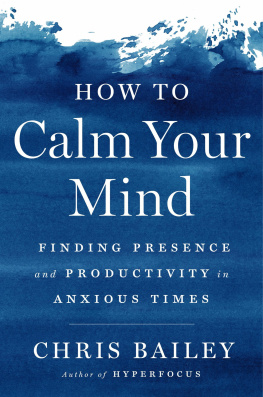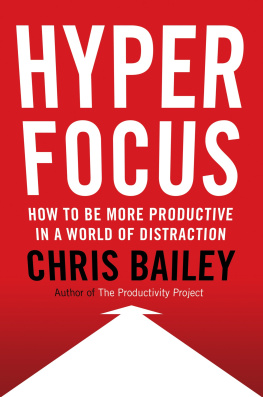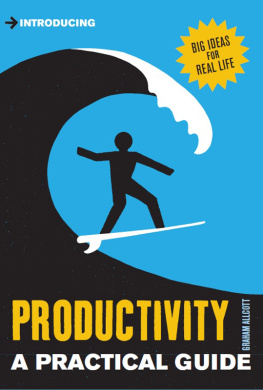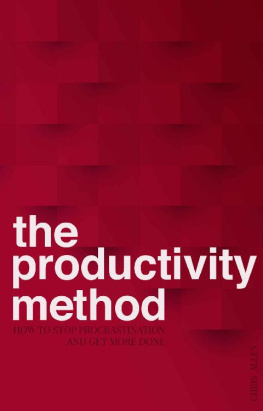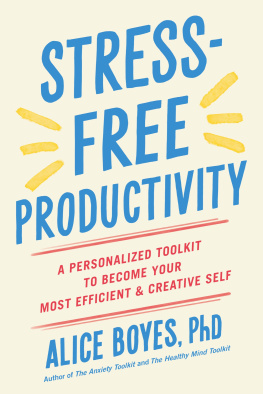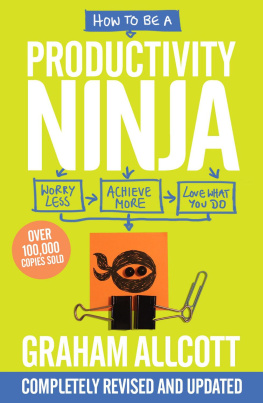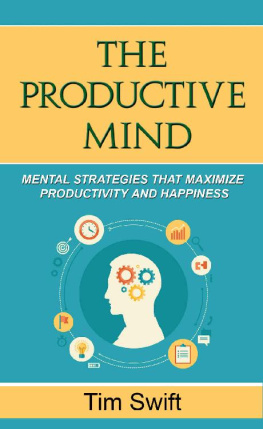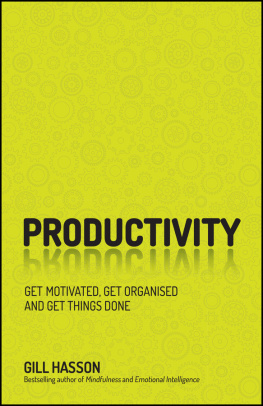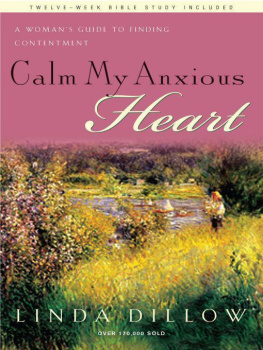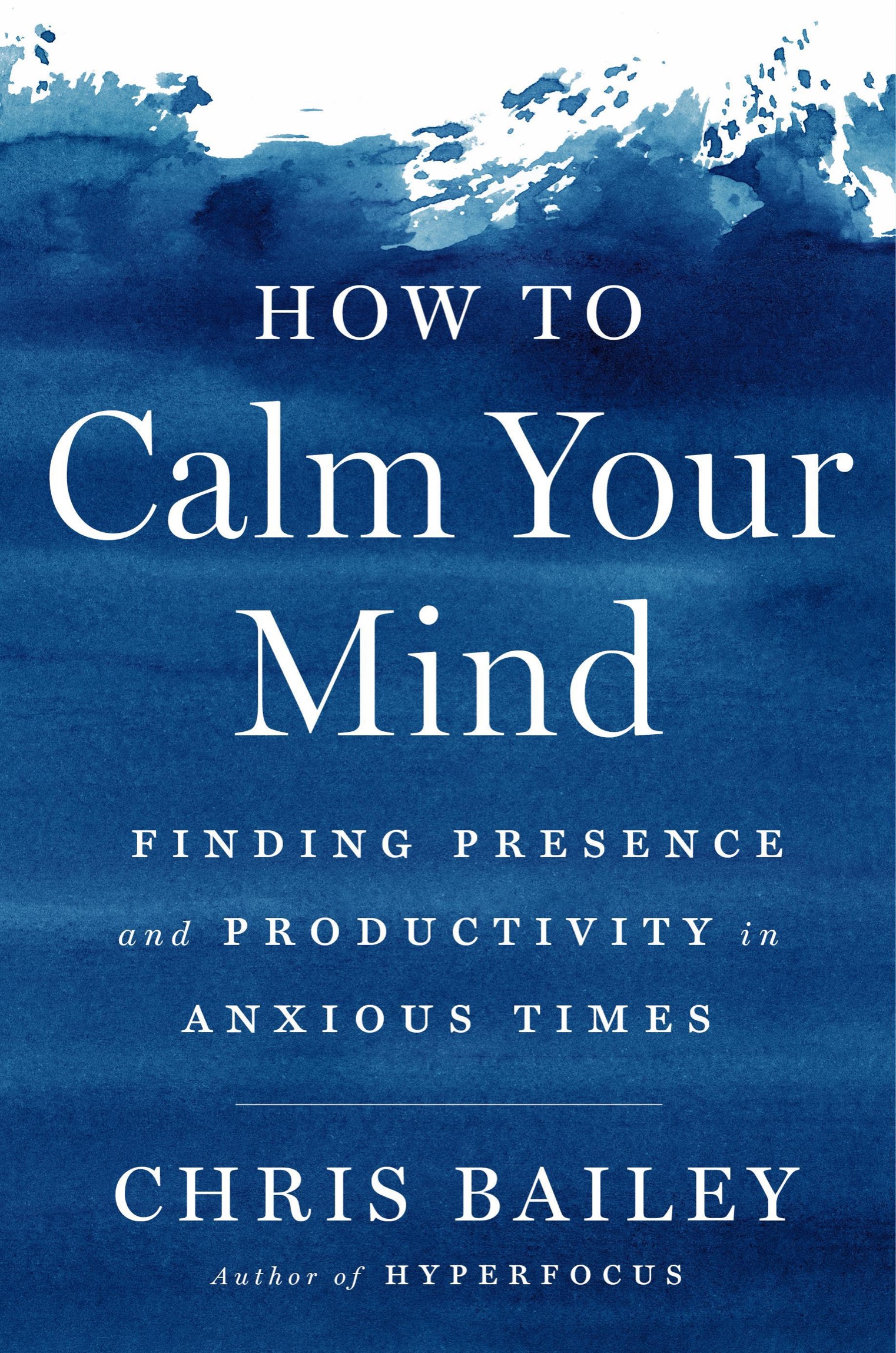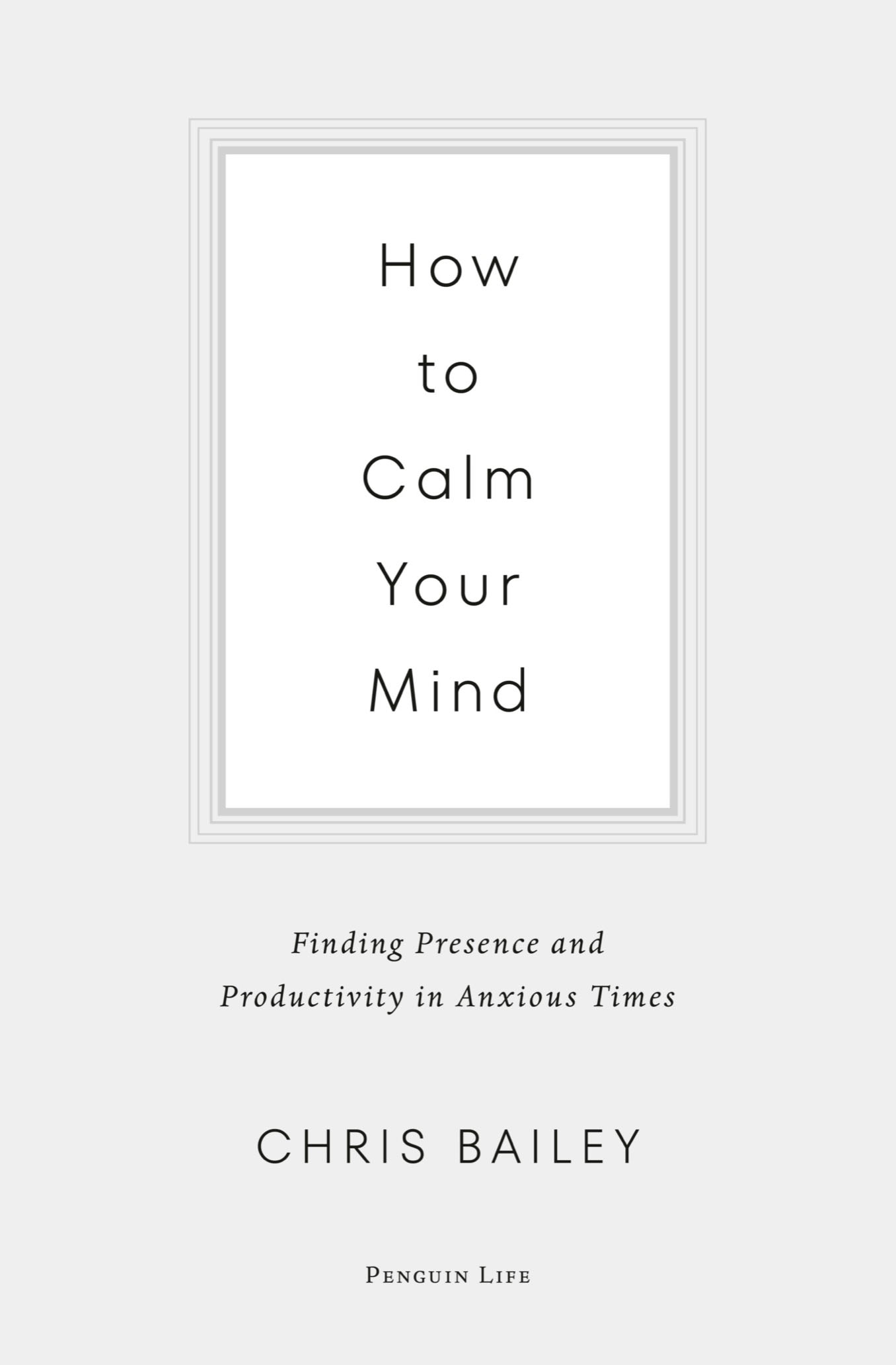Also by Chris Bailey
The Productivity Project
Hyperfocus
VIKING
An imprint of Penguin Random House LLC
penguinrandomhouse.com
Simultaneously published in hardcover in Canada by Penguin Random House Canada, Toronto, in 2022
First United States edition published by Penguin Life, 2022
Copyright 2022 by Chris Bailey
Penguin Random House supports copyright. Copyright fuels creativity, encourages diverse voices, promotes free speech, and creates a vibrant culture. Thank you for buying an authorized edition of this book and for complying with copyright laws by not reproducing, scanning, or distributing any part of it in any form without permission. You are supporting writers and allowing Penguin Random House to continue to publish books for every reader.
A Penguin Life Book
library of congress cataloging-in-publication data
Names: Bailey, Chris, 1989 author.
Title: How to calm your mind : finding presence and productivity in anxious times / Chris Bailey.
Description: First United States edition. | New York : Penguin Life, 2022. | Includes bibliographical references and index.
Identifiers: LCCN 2022038483 (print) | LCCN 2022038484 (ebook) | ISBN 9780593298510 (hardcover) | ISBN 9780593298527 (ebook)
Subjects: LCSH: Calmness. | Anxiety. | Stress management.
Classification: LCC BF575.C35 B34 2022 (print) | LCC BF575.C35 (ebook) | DDC 152.4dc23/eng/20220921
LC record available at https://lccn.loc.gov/2022038483
LC ebook record available at https://lccn.loc.gov/2022038484
Cover design: Lynn Buckley
Cover art: White Snow / Shutterstock
Designed by Cassandra Garruzzo Mueller, adapted for ebook by Molly Jeszke
pid_prh_6.0_142058442_c0_r0
For my family
You are the sky. Everything elseits just the weather.
Pema Chdrn
Contents
PREFACE
Why We Need Calm
I did not intend to write this book. A few years ago, I plunged deep into a state of burnout, and soon after experienced an anxiety attack while speaking in front of an audience of one hundred people (a story Ill share in the first chapter). Out of necessity for my own mental health, I dove headfirst into the science surrounding the topic of calm: poring through journal articles, chatting with researchers, and running experiments on myself to try out the ideas I encountered and try to calm my mind.
I write about productivity for a livingand really enjoy doing so. In the midst of my burnout and anxiety, though, my thinking was alternating between restlessness and insecurity. If I was exhausted and anxious while deploying the very productivity strategies I was writing about, what right did I have to give that kind of advice in the first place? Something was missing.
Fortunately, after digging deep into the research, I found a very different idea from the one I had been telling myself. Driven initially by self-preservation, which quickly turned into a curiosity I could not extinguish, I discovered how misunderstood the state of mind we call calm is, to the extent that it is understood at all. While its true that anxietythe opposite of calmis our responsibility to deal with, many of the factors that lead us to feel anxious are hidden from view, making them difficult to identify, let alone tame.
Im probably not the only person who has been feeling more anxious than usual. I type these words in 2022, two years into what we all know has been a particularly stressful time. If anxiety has creeped in for you, too, know you are not alone, and you shouldnt beat yourself up over it. Certain sources of anxiety (and stress) are easy enough to spot, like a global pandemic, news about war, or having an overly demanding job. But many more sources are neither obvious nor apparentincluding the ones well cover in this book. Some of these factors include the extent to which were driven to accomplish more; the numerous invisible sources of stress buried within our days; the superstimuli we tend to regularly; our performance against the six burnout factors; our personal stimulation height; the amount of time we spend in the digital world compared with the analog one; and even what we eat and drink. These sources of anxiety are the metaphorical dragons I would eventually encounter in my journey to calm.
In this book, Ill break down these ideas and more. Luckily, there are practical, tactical strategiesmany of which you can invest in right awaythat can help you overcome anxiety and burnout, all while reclaiming calm.
* * *
As my experiment to tame stress and burnout while finding calm progressed, I was relieved to discover that the productivity advice Id been giving wasnt wrong. It was, however, missing a critical piece of the productivity picture.
Productivity advice works. Good productivity advice (theres a lot of fluff out there) helps us take control of our time, attention, and energy, which frees up mental and calendar space for whats meaningful. That enriches our lives. It also reduces stress and lets us stay on top of things. Given all we have to juggle, this is more essential today than ever before.
But its also crucial that we develop our capacity for healthy productivity in our lives and work. When we face anxiety and burnout, we become less productive without realizing it.
Investing in calm is the way to maintain and even grow our capacity for productivity.
Finding calm and overcoming anxiety make us more comfortable in our own skin, while at the same time helping us to feel at home inside our mind. We build a larger, more expansive reservoir of energy from which we can draw throughout the day. This allows us to work productively and live a good life. By bringing more calm to our day, we invest in the missing piece that fuels our effortsin work and lifeto become sustainable over time. Encountering the ideas in this book, I felt all of the productivity advice I had been giving lock into place with a satisfying click.
During this journey to calm, my productivity levels rose dramatically as I became less anxious and burnt out. With a calm, clear mind, I could write and connect ideas with relative ease; when I would typically have written several hundred words, I found myself penning a couple thousand. With less anxiety I became more patient. I listened more deeply and became far more engaged with whomever I was with and in whatever I was doing. My thoughts were crisp, my ideas sharp, my actions more deliberate. I became more intentional and less reactive, my mind no longer frazzled by outside events. And I connected with the purpose behind my actions, which made my days feel more meaningful.
In practice, the productivity benefits of calm can be profound. And regardless of your circumstancesincluding if you have limited time, budget, or energycalm is attainable. This book explores the strategies that will help get you there. (Well see just how much time calm earns us back in chapter 8.)
This leads us to an exciting conclusion: even after setting aside the plentiful mental health benefits of calm, reducing anxiety is worth our time. Because calm makes us more productive, we more than make back the time we spend trying to achieve it.
* * *
As I went through my personal journey, I began capturing all that I learned about the topic of calm into something that vaguely resembled the outline of this book. I started the process reluctantly, knowing Id need to reveal the more challenging, personal parts of my story. But the phenomena of anxiety and burnout are too universal to

